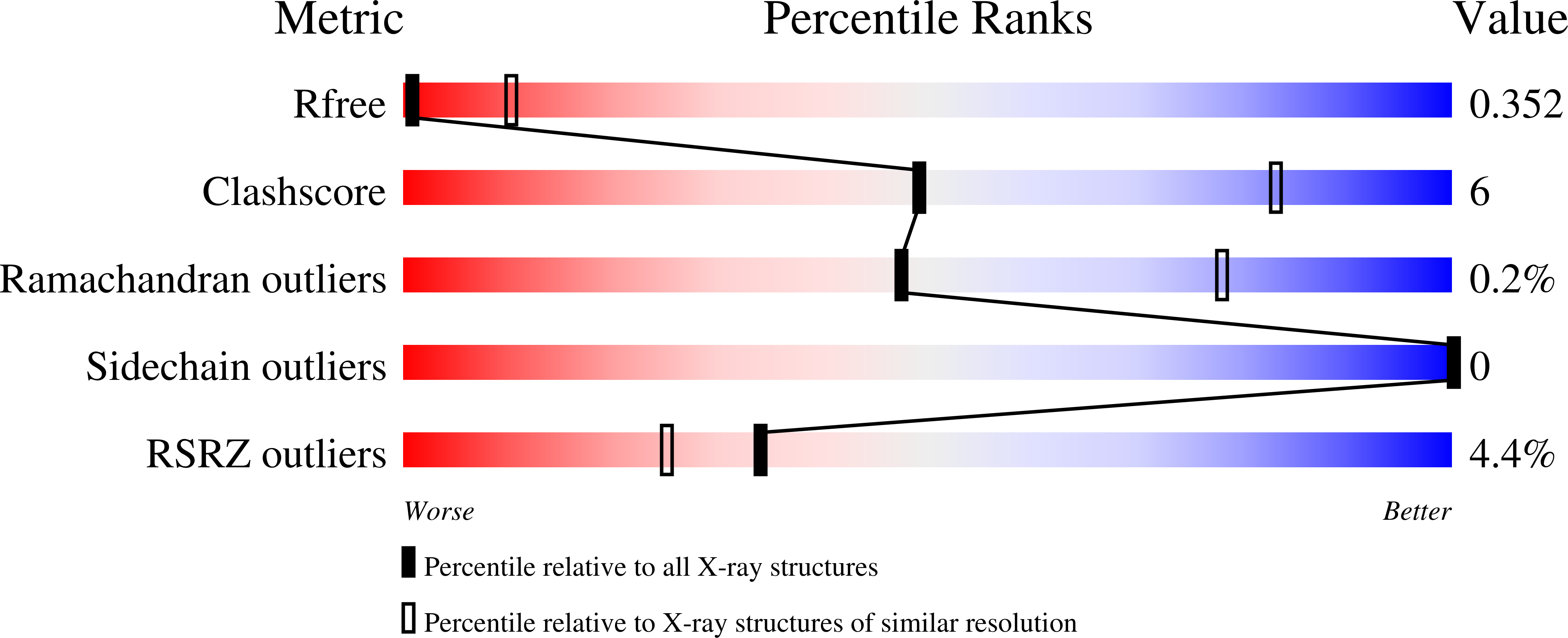K 2P channel C-type gating involves asymmetric selectivity filter order-disorder transitions.
Lolicato, M., Natale, A.M., Abderemane-Ali, F., Crottes, D., Capponi, S., Duman, R., Wagner, A., Rosenberg, J.M., Grabe, M., Minor Jr., D.L.(2020) Sci Adv 6
- PubMed: 33127683
- DOI: https://doi.org/10.1126/sciadv.abc9174
- Primary Citation of Related Structures:
6W7B, 6W7C, 6W7D, 6W7E, 6W82, 6W83, 6W84, 6W85, 6W86, 6W87, 6W88, 6W8A, 6W8C, 6W8F - PubMed Abstract:
K 2P potassium channels regulate cellular excitability using their selectivity filter (C-type) gate. C-type gating mechanisms, best characterized in homotetrameric potassium channels, remain controversial and are attributed to selectivity filter pinching, dilation, or subtle structural changes. The extent to which such mechanisms control C-type gating of innately heterodimeric K 2P s is unknown. Here, combining K 2P 2.1 (TREK-1) x-ray crystallography in different potassium concentrations, potassium anomalous scattering, molecular dynamics, and electrophysiology, we uncover unprecedented, asymmetric, potassium-dependent conformational changes that underlie K 2P C-type gating. These asymmetric order-disorder transitions, enabled by the K 2P heterodimeric architecture, encompass pinching and dilation, disrupt the S1 and S2 ion binding sites, require the uniquely long K 2P SF2-M4 loop and conserved "M3 glutamate network," and are suppressed by the K 2P C-type gate activator ML335. These findings demonstrate that two distinct C-type gating mechanisms can operate in one channel and underscore the SF2-M4 loop as a target for K 2P channel modulator development.
Organizational Affiliation:
Cardiovascular Research Institute, University of California, San Francisco, CA 93858-2330, USA.


















